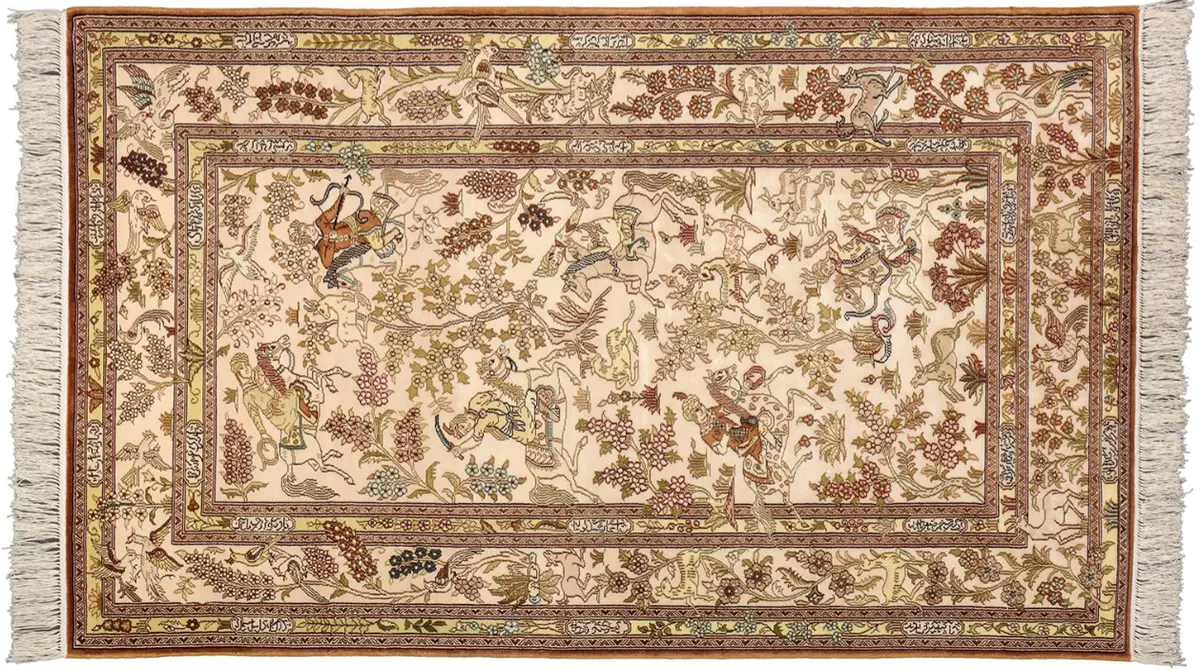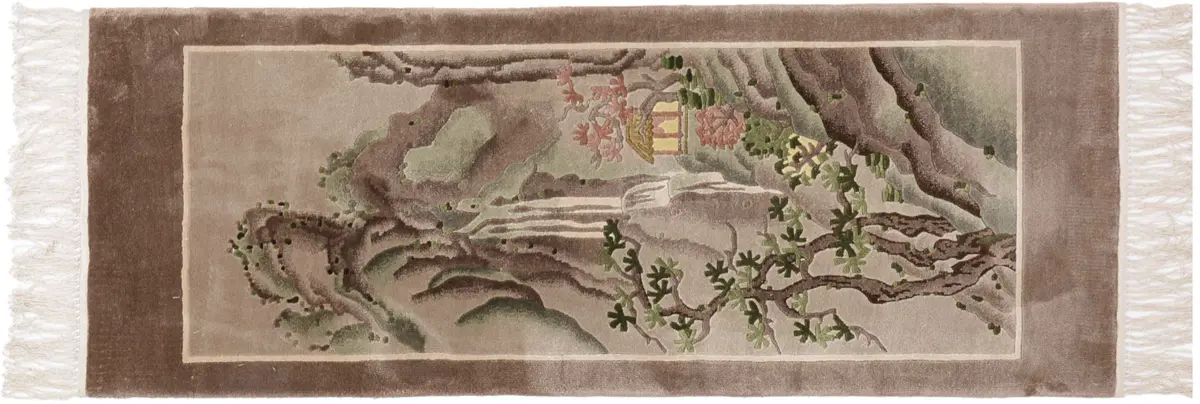Chinese carpets
Chinese Carpet Cleaning, Chinese Carpet Cleaning, Chinese Wool Carpet Cleaning, Chinese Piece Carpet Cleaning, Chinese Silk Carpet Cleaning provides services to clients in the areas of renovation, repair, deep cleaning, revitalization, antibacterial and disinfectant protection, impregnation of natural carpets according to your requirements in top quality according to our internal company standards, IICRC™ guidelines and standards and PERSIAN® expertly implemented system.

 The trademark PERSIAN® defines the branded technological concept of the expertly qualified Carpet Service® implementation company, focused on the regular maintenance, cleaning, revitalization and impregnation of artificial, natural, wool, Chinese and silk carpets, textile and leather sofas, armchairs, chairs and upholstered materials. This branded concept brings the utmost professionalism in full synergy with maintaining ethical, environmental and quality performance standards including contractual guarantee of the services provided by the contractor.
The trademark PERSIAN® defines the branded technological concept of the expertly qualified Carpet Service® implementation company, focused on the regular maintenance, cleaning, revitalization and impregnation of artificial, natural, wool, Chinese and silk carpets, textile and leather sofas, armchairs, chairs and upholstered materials. This branded concept brings the utmost professionalism in full synergy with maintaining ethical, environmental and quality performance standards including contractual guarantee of the services provided by the contractor.
Chinese carpets fall into the category of more expensive to expensive carpets and their maintenance is not easy and above all, should be carried out by a qualified contractor. If your Chinese carpet at home is put under a lot of strain, it may get to a state where dust and dirt cannot be gotten rid of by simply vacuuming and therefore it is always best to have your Chinese carpet professionally cleaned. Proper cleaning techniques can keep your carpet in great condition.
Chinese carpets – the history and science of carpets
Chinese antique carpets from China have a very strong character and immediately catch the eye. Their pattern is made up of large flowers and cunning , which are further accentuated by the surrounding unpatterned areas. The basic tone is usually determined by two distinctive colours, which often form a strong contrast with each other… However, because only the finest virgin wool was used for knotting, the lustre of these carpets has developed over the years to an almost silky sheen.
The style of Chinese carpets has changed little over time. They have become more restrained in colour and pattern, but are still distinctive. Flowers have cultural significance in China, for example the peach blossom signifies love or the tulip signifies courage. Carpets also adorn porcelain, fabrics and many other art objects.
Chinese carpets have always been popular for their harmonious colours and floral elements. These rugs are often thicker, made of soft wool and come in many different color combinations. The patterns of these carpets commonly form an embossing, giving them a three-dimensional appearance.
Traditional Chinese carpets:
- They are characterized by intricate patterns and rich colors.
- They often depict dragons, phoenixes, floral motifs and good luck symbols.
- They are woven from high quality wool and silk.
- They can be very fine and detailed.
Modern Chinese carpets:
- Offers a wide range of styles and designs, from minimalist to extravagant.
- They often use modern materials such as acrylic and polyester.
- They are more affordable than traditional carpets.
Chinese regional specialties:
- Beijing: Famous for fine silk carpets with palace-like patterns.
- Tianjin: Famous for wool and silk carpets with floral and geometric patterns.
- Ningxia: Produces sheep’s wool rugs with sturdy construction and ethnic patterns.
- Tibet: Offers hand-woven yak wool rugs with religious symbols and mandalas.
Chinese silk carpets with Persian designs – Chinese silk carpets are also extremely well-known and are often woven in Persian designs. Due to the high density of knots, they are very time consuming to produce.

Cleaning and maintenance of Chinese carpets
Chinese carpets with natural material require professional care. It is not recommended to attempt home deep cleaning by means of a steam cleaner from the back and front, as the steam cleaner is unable to clean it all and the excessive heat penetrating it damages the wool and its natural lanolin. Excessive heat can also lead to shrinkage of the natural fibres of Chinese carpets, which can put you at risk of permanent damage.
Home care for Chinese carpets is simple. Regular weekly vacuuming ideally with a knocking head will not harm it for decades. The natural vegetable dyes, dense weave and natural grease of virgin wool provide protection so that most dirt will not penetrate the carpet at all. Only the smallest particles of sand and dust can settle in the foundation over time. In order to remove even the smallest dust particles from the carpet, it is recommended to have the carpet deep cleaned every 2-3 years by an expert – professional natural carpet cleaner.
In everyday life, Chinese carpets know only two enemies: red wine and years of sunlight. Red wine stains can be treated, but cleaning is very time consuming and therefore a non-negligible cost factor. To prevent one-sided exposure of the carpet to sunlight, it helps to rotate the carpet frequently at even intervals so that both sides are exposed to similar amounts of sunlight. The sun does not necessarily lead to a reduction in the value of the carpet. Many old and antique Chinese carpets have only become particularly beautiful and valuable through even exposure to sunlight. Some Chinese carpets are even exposed to the sun for long periods of time to give the colour a brighter and more balanced sheen.
In the event that a Chinese rug only comes into contact with water, it is usually sufficient to dry it thoroughly on both sides. The carpet will lift for several days when wet, as the warp expands due to the moisture. Once the moisture has escaped from the carpet, the warp will settle again and the carpet will not change. Strong rubbing of water stains in dry conditions or the use of cleaning agents should be avoided, as both can damage the Chinese rug. In the case of coffee or cola stains, you should contact a professional as soon as possible. You can treat the stain yourself using lukewarm water and dishwashing liquid. However, you should seek professional advice before doing so.
Mould removal + mould prevention for older Chinese carpets that may smell of mold or damp odor is important not to neglect, as natural carpets have a natural tendency to retain moisture that later leads to mold. There are several ways you can get rid of unpleasant odours by cleaning your carpets:
- Leave the Chinese rug in sunlight for a few hours.
- Dry the carpet with a fan on both sides and be sure to work in sections.
- Take the carpet to a professional carpet cleaner – this is a guaranteed way to get rid of mildew from Chinese carpet.
Professional carpet cleaning and the reputable Chinese carpet maintenance provided through expertly skilled technology brings the assurance that your Chinese carpet will not shrink, fade, or even show any damage.
- We first remove most dirt and dust from your Chinese carpet by hand with gentle machinery, instead of running it through aggressive equipment that can damage your precious carpet.
- Depending on the material of your Chinese rug, we will use a specialized stain remover to thoroughly remove or reduce the stain depending on the condition of the rug.
- Depending on the material, your carpet will either be cleaned in a water bath and then chemically cleaned using special “WOOL SAFE” chemical cleaners.
- We will then dry the Chinese carpets as best we can to remove excess moisture and let it dry and turn it off.
- Finally, we thoroughly disinfect and impregnate the Chinese rug and after a thorough inspection, we wrap it and prepare it for delivery or transport to you.
How you can protect the carpet from damage
- Moth larvae nesting in Chinese carpets are quite common and can be kept under control by regular vacuuming, leaving the carpets in sunlight for a few hours and also by having them professionally cleaned.
- If you want to store Chinese carpets, it is best to have them professionally cleaned and kept in a closed area to prevent dirt from getting on them.
- Always keep the carpet in a dry and clean area as moisture causes damage to the carpet.
- To avoid excessive pressure on the carpet, use furniture covers on the legs of tables and chairs.
- Use thick rubber pads under loose rugs to prevent them from sliding. They also help manage the weight of the furniture.
In conclusion, it’s always better to have your Chinese rugs cleaned by a professional than to try to do it yourself. This is because the more likely a mistake is made, the more your carpet will be damaged or may become locally degraded, even irreversibly.